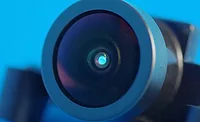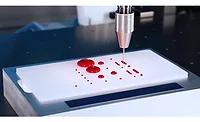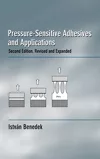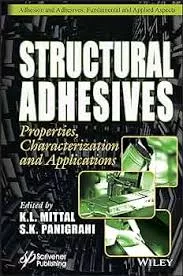Comparing UV Acrylate Performance in Laminating Adhesives for Durable Electronics Applications
Several innovative materials can meet the requirements of laminating adhesives.



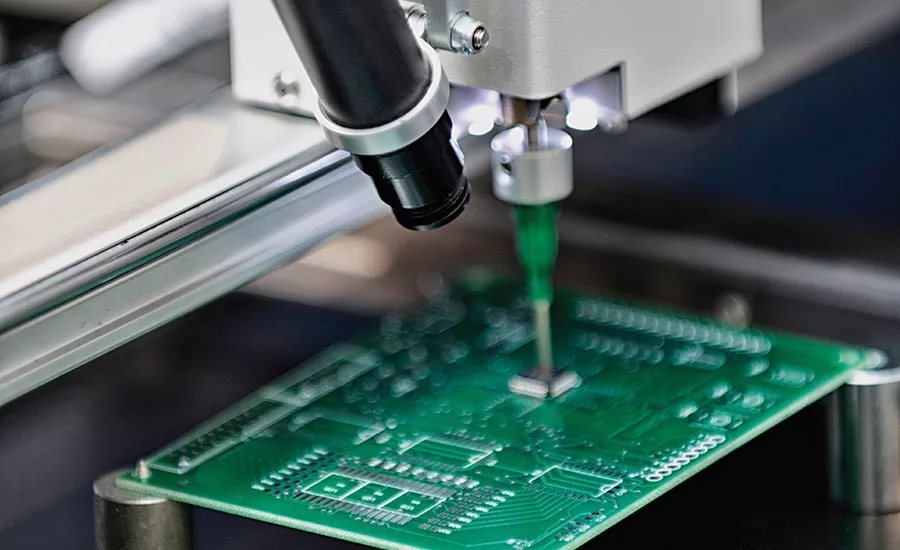

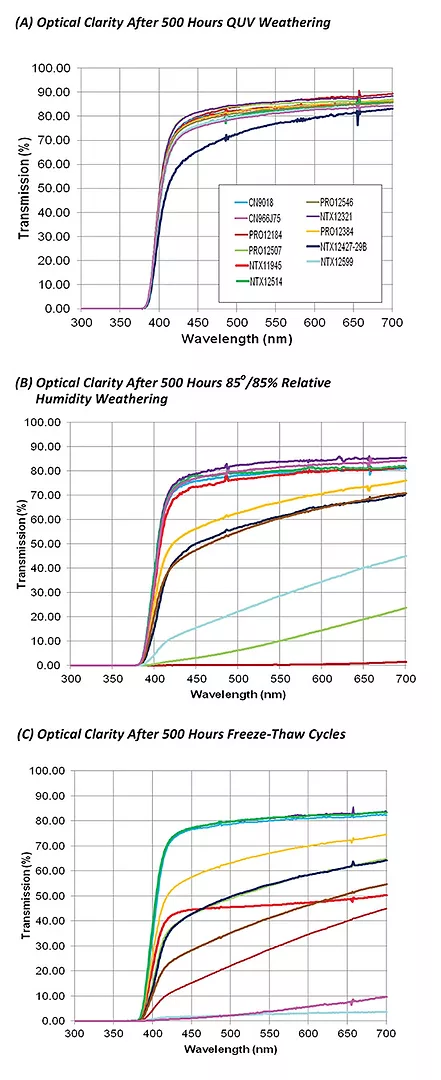
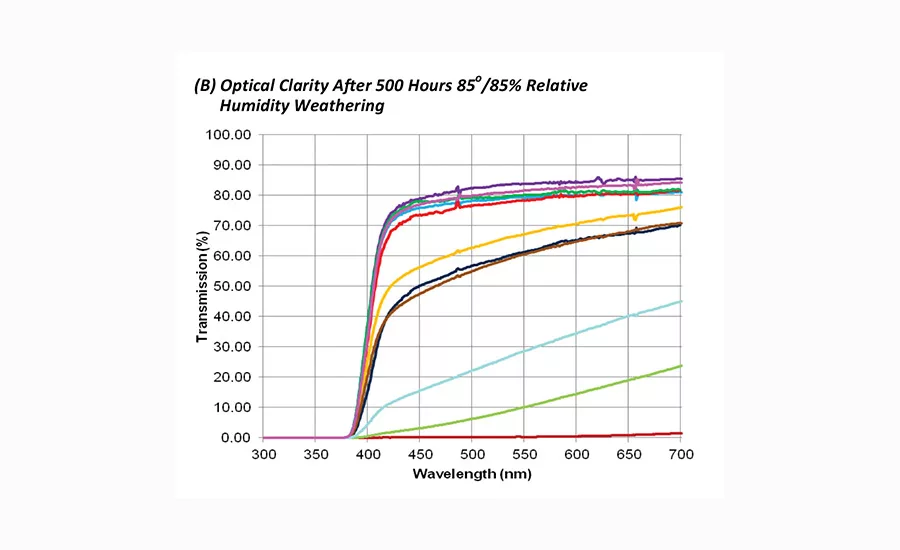


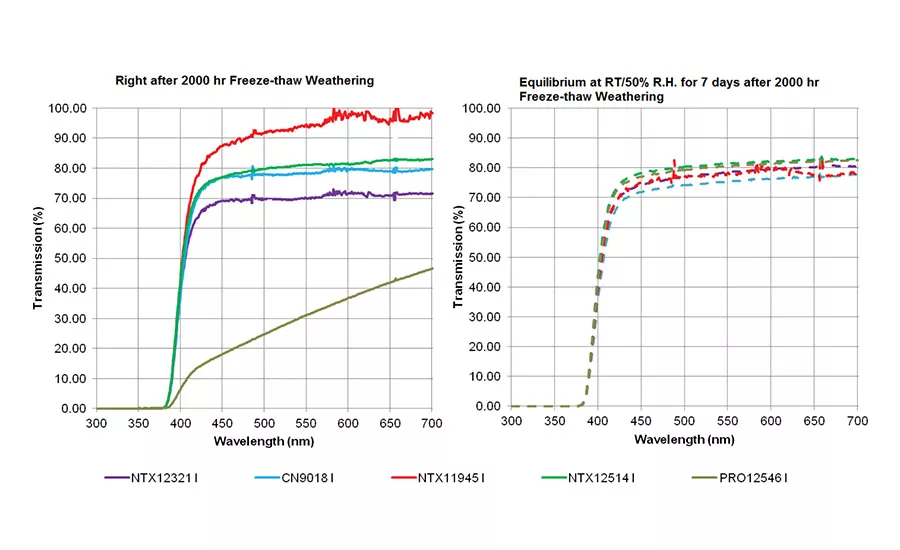
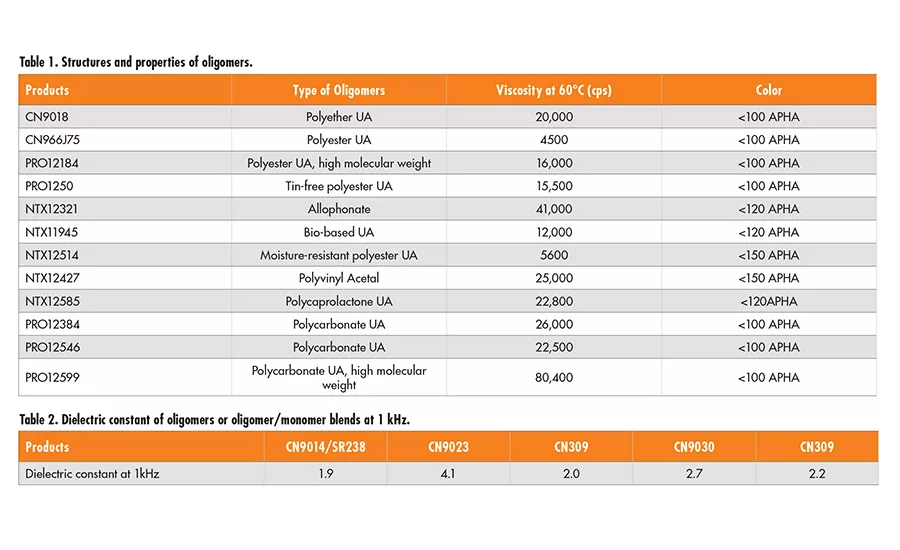
Laminating adhesives are used for bonding two substrates together. They can be used in a variety of applications, such as food packaging, aerospace, automobiles, electronics or solar panels. The major technologies include solventborne, waterborne, two-component urethanes and UV-curable resins. UV technology is rapidly gaining acceptance in a variety of industries due to its environmental and economic advantages.1
During recent years, market demand has been strong for liquid optically clear adhesives (LOCA) for display or touchscreen applications. Key performance requirements include strong bonding strength to the substrates, excellent reliability, high optical clarity and superior moisture resistance. For high-quality displays, low dielectric constant bonding adhesives are also necessary.
The moisture barrier performance of UV/EB-cured materials has been discussed in previous publications.2-3 Here, we will examine the durability properties of UV-cured acrylates under three weathering conditions, including Q-Panel laboratory ultraviolet (QUV) testing, 85°C/85% relative humidity and freeze-thaw cycles. The key properties evaluated are optical clarity characterized by percentage of UV-Vis transmission and T-peel strength. In the end, we will discuss the dielectric properties of different types of oligomers.
Experimental
Several new products were developed for laminating adhesive applications. Their adhesive and durability properties were evaluated using two commercial products, CN966J75 and CN9018, as controls.
Reliability Property Tests
Sample Preparation
Each oligomer was formulated using Sartomer’s standard adhesive formulation package. The adhesives were laminated between DuPont (XST-6578) PET films. They were cured under a Fusion 600 W/in D lamp at a speed of 15 fpm. The thickness of each adhesive sample was controlled at approximately 9 mils.
Weathering Tests
We evaluated the adhesive performance under three weathering conditions: ASTM D4329-05 cycle B QUV; 85°C/85% relative humidity; and freeze-thaw cycles (each cycle includes 20 hours at 85°C/85% relative humidity and 2 hours at -40°C).
T-Peel Test
The samples were cut at 1-in. width. The T-peel test was performed using an Instron 5543 and following the ASTM D1876-08 standard. The weathering samples were equilibrated at RT/50% relative humidity environment for seven days before T-peel testing.
UV-Vis Spectra
UV-Vis spectra were collected for each laminating adhesive before and after weathering up to 2,000 hours.
Dielectric Property Tests
Sample Preparation
Oligomers or oligomer/monomer blends were formulated with 3% Esacure KIP 150 and 1% Esacure TZT. The samples were drawn down onto aluminum, followed by cure under a Fusion 600 W/in H lamp at a speed of 25 fpm.
Dielectric Constant
The films were cut into 3 x 3-in., squares. The thickness was measured to be 2-3 mils. The dielectric constant was measured following the ASTM D150 method at a frequency of 1 kHz.
Results and Discussions
Table 1 introduces nine new acrylate products using two commercial products, CN9018 and CN966J75, as controls. CN9018 is well-accepted for pressure-sensitive adhesive applications, and CN966J75 for laminating adhesive applications. Using the standard formulation package (see Experimental section), adhesive samples were prepared for each oligomer. The adhesives were then laminated and cured between two PET films with controlled thickness at around 9 mils.
Peel strength and optical clarity are critical properties for electronic laminating adhesives. We monitored the change of these properties with time under three weathering conditions. Due to the flexibility of the PET substrates, we chose the T-peel test to determine the strength of the adhesives. The three weathering conditions reflect different levels of temperature, moisture and UV exposure. The QUV testing condition is relatively mild in both temperature and humidity. This test indicates the material’s UV resistance. The 85°C/85% relative humidity weathering test indicates the adhesive’s moisture resistance property. Finally, the freeze-thaw weathering test is used to screen for adhesives that can survive very harsh conditions.
Figure 1 presents the T-peel strength of the adhesives after 500 hours of exposure to QUV, 85°C/85% relative humidity and freeze-thaw conditions. As seen in the figure, the commercial control, polyester urethane acrylate CN966J75, has much higher initial peel strength than polyether urethane acrylate CN9018. Similarly, the experimental oligomers with the highest initial peel strength are polyester urethane acrylates (PRO12184, PRO12507 and PRO12546) and polycarbonate urethane acrylates (PRO12384 and PRO12599).
Most experimental products, except for reactive polyvinyl acetal, present better durability than controls. The best candidates for extreme weathering conditions (freeze-thaw) are polycarbonate urethane acrylates PRO12546 and PRO12599. Interestingly, even though the ester group was easily degraded at high humidity conditions, NTX12514, based on a moisture resistant polyester polyol, presents superior durability.
Figure 2 presents the UV-vis spectra for the adhesives after 500-hour weathering tests. All of the oligomers exhibit good optical clarity after QUV aging. Three oligomers, including polyester urethane acrylates PRO12184 and PRO12507, and polycarbonate urethane acrylate PRO12599, lost clarity after 500 hours of 85°C/85% RH aging. The common feature of these three oligomers is their high molecular weight. Lower crosslink density could allow higher moisture permeability.
The low peel strength and high cloudiness of the adhesives based on PRO12184 and PRO12507 indicate that the ester group on the oligomer backbone might degrade during 85°/85% RH weathering. The high peel strength but low clarity of the adhesive based on PRO12599 indicates that the penetration of moisture into the films might also cause cloudiness.
As expected, these three oligomers are also the worst performers under freeze-thaw weathering conditions. The combination of high peel strength and excellent optical clarity of NTX12514 indicates that this oligomer is the best candidate for electronic adhesive applications.
Consumer electronic adhesives usually require 1,000 hours durability, thus we continued the weathering tests to 1,000 hours and 2,000 hours. As predicted, the T-peel and clarity of the films after 1,000 hours weathering are better than those after 2,000 hours. Here, we only present the T-peel strength data after 2,000 hours aging (see Figure 3).
The two best products were NTX12514, a urethane acrylate based on moisture-resistant polyester polyol, and PRO12546, a polycarbonate urethane acrylate. Only four oligomers (NTX12321, CN9018, NTX12945 and NTX12514) could maintain optical clarity throughout 2,000 hours of all the weathering tests.
We believe that the cloudiness of the adhesive based on PRO12546 is caused by moisture penetration. Therefore, we collected UV-vis spectra again after the adhesive was equilibrated at room temperature for seven days. Under this condition, the film based on PRO12546 exhibited superior optical clarity, supporting our hypothesis.
Thus, NTX12514 and PRO12546 are the best candidates for electronic or solar panel laminating adhesive applications. Other experimental oligomers, including PRO12184, PRO12507 or NTX12599, also present higher performance than the existing commercial product, CN966J75.2
With the increasing popularity of smartphones and tablet PCs as enabling tools, the importance of display quality is becoming more important. In particular, the need for better outdoor readability is emphasized.4 Filling the air gap between the touchscreen and the display by directly bonding the optically clear adhesives (OCAs) drastically improves both indoor and outdoor readability.
The lower the dielectric constant of OCA layer, the thinner the OCA layer and the better the performance. In this study, we evaluated the dielectric constant for several commercial products. Table 2 summarized our testing results. The best products with low dielectric constant and superior adhesion properties include CN9014 and CN823. Testing on the experimental products is under way.
Conclusion
In this study, NTX12514 and PRO12546 demonstrate high bonding strength to PET substrates and excellent durability under extreme weathering conditions. The PRO12184, PRO12507 and NTX12599 products demonstrate high bonding strength and reasonable reliability, which make them good candidates for conventional consumer or industrial electronics. For liquid OCA applications, the CN9014 and CN823/CN309 existing commercial products are the best candidates. A series of new products is under development to meet these market needs.
For more information, visit www.sartomer.com.
References
1. Voss, Peter A., “Water-Based Adhesives,” FLEXO Magazine, February 2002.
2. Oliver, Joshua M., “Influences on Barrier Performance of UV/EB Cured Polymers,” UV&EB 2010 Technology Expo and Conference.
3. Oliver, Joshua M.; Babcock, Dale D., “Influences on Barrier Performance of UV/EB Cured Polymers,” UV&EB 2012 Technology Expo and Conference.
4. “OCA/OCR for Touch Panel-Market and Technology Analysis,” IHS Market Report, 2013.
Looking for a reprint of this article?
From high-res PDFs to custom plaques, order your copy today!



